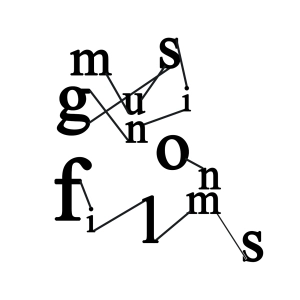Screening at Coventry Cathedral, with a live score performed by Mogwai
I wore no Mogwai or Eels t-shirt. The only black I own is skinny jeans. I don’t even know who Mogwai are. Gizmo in Gremlins (1984)? There were lots of different entry points: the cathedral itself, with its history in bombing and aims of truth and reconciliation; people moved by Mogwai’s music; fans of Mark Cousins’ experimental documentaries. It was great to hear the music live, but the acoustics of the cathedral were unable to really elevate it to spectacular. It was fine – but there wasn’t the sense of the inherent chaos of live performance, where the music can be twisted in subtle ways impossible through CD or Spotify.
There are traces of Adam Curtis throughout: unlike I Am Belfast (2015), it exists as a ‘remix documentary’, utilising old newsreel footage and adapting it, without the need for talking heads or an overarching VO. Where this footage would otherwise be given a moment’s notice through the occasional viewer on YouTube, watched in isolation, or accessed by the student or the historian, it is given new life and new narrative meaning – a style to need to pay closer attention to in the digital age.
It’s easy to assume the nuclear age is history: Cold War hostilities are over; Hiroshima is a living memory only in the very old. But though a large focus of the footage is on the 40s-90s, the film also gives focus to more modern protests, and the 2010 Fukushima nuclear disaster. As North Korea becomes an increasingly nuclear state, and Trident is voted on to be renewed, we need to stop thinking of the nuclear age in terms of “duck and cover” and “protect and survive”.
The film raises the question of being active. In one scene, a man talks about how he’s doing enough by turning up to a protest, because that’s all he can do. Soon after this, we hear a haunting protest song. Millions of people are dead, despite the protests. Because we didn’t lobby the government. We didn’t do more.
Citywide nuclear devastation feels impossible – but is it really? As the film tells us in the exposition in the final scene, only South Africa has shifted away from being a nuclear state. Only the US pays reparations to victims of nuclear attacks. Over 15,000 nuclear warheads are active.
Unlike the fantasy created in X-Men: Apocalypse (2016), the warheads are still here.



You must be logged in to post a comment.